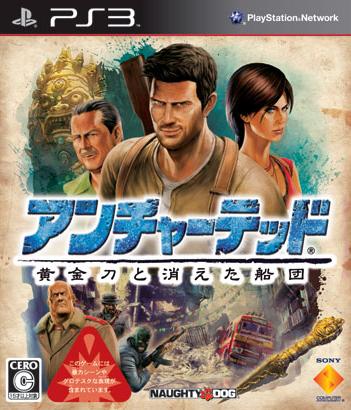Uncharted 2 – I’m Not Here, This Isn’t Really Happening
January 3rd, 2018
Player agency separates video games from passive media such as film and literature. Unlike these other art forms, players of video games must exert skill so as to overcome challenges. And so playing a video game requires effort and commitment, much like any other skill-based task. However, not everyone wants to sit down after a hard day of work and put their learning and mastery to the test. And so in the last decade or so, the games industry has seen an increase in titles in the AAA games space which attempt to appeal to a wider audience at the expense of player agency and gameplay. The Uncharted series stands out in this regard. In a series of livestream discussions surveying games criticism on the Uncharted series, critic and game developer Richard Terrell concluded that Uncharted 4 (the latest game in the series) is a “super casual game”, citing the simplified shooting sequences and increased proportion of low intensity climbing and walking sections. While I haven’t played Uncharted 4, I would argue that the series has always sought to appeal to a wider audience by creating a more passive game experience. The following examples from Uncharted 2 may seem slight on their own, but together they play a significant role in reducing the player’s agency and the potential interactivity.
Too Many Cutscenes
According to How Long to Beat, most players need 10.5 hours of game time to beat Uncharted 2, yet around 3 hours of this time consists of non-interactive cutscenes. To put this into perspective, for roughly every 3 minutes of play time, the player will spend 1 minute watching a video. While well written and engaging, these sequences mostly consist of characters in dialogue, exchanging information which perhaps could have been integrated elsewhere. After all, Uncharted 2‘s plot isn’t terribly complicated.
Overuse of Checkpoints
For every significant gunfight won, the player reaches a checkpoint. While this measure keeps the game moving forward, the constant checkpointing also shortens the sustained length of time during which the player must play well in order to overcome a challenge. As a result, the player has little to lose going in to most confrontations and thus the game gives licence to more thoughtless play. The fast turn around between failure and attempt also reduces the intervening time where players subconsciously internalise mistakes and formulate new strategies. With Drake’s recharging health and ability to sustain multiple gunshots as well as few hard locks forcing the player to engage with each challenge, the generous checkpointing only makes running past enemies an even more viable strategy.
Early Clue Prompts
If the player waits around in a given area for more than a minute, a clue prompt will appear on screen. Activating the prompt makes the camera frame the next point of progress. The hint usually doesn’t spoil any puzzles; however, I find that it chimes in way too quickly. Oftentimes throughout my playthrough, I’d be notified of a free hint before I even had a solid grasp of my surroundings—and once it pops up, I doubt few players could resist using it. In this way, the clue prompts sap some of the exploration out of the gameplay.
Best of Friends
The developers turned friendly fire off, which means that the player can’t accidentally shoot Drake’s companions. However, the AI generally tends to occupy the space to the sides of most confrontations and Uncharted’s third person view and open combat environments provide the player with plenty of visual and physical room to easily manoeuvre around the other characters (there are, for example, few firefights which take place in narrow corridors). So in this sense turning off friendly fire cuts out the effort needed to work around your team mates. Other third-person shooters such as Resident Evil 4 turn on friendly fire and thereby allow the AI character to add an extra wrinkle to the gameplay. In Uncharted 2 though, Drake’s companions don’t change the gameplay in any meaningful way.
Bubble Wrapped Realism
Despite the painstaking visual realism, Uncharted 2‘s environments are for the most part static window dressing. Animals, lights, glass, and vases, among other things, don’t react realistically when shot. Only in specific instances where the game designers need Drake to shoot something that isn’t Eastern-European or explosive will the item respond.
Not only do the player and game world lack interplay, but the game elements don’t react to each other either, as I found out when I got Drake to hold a gas canister over an open flame. For contrast, in the first level of Syphon Filter lights, windows, bottles, computers, padlocks, and police cars all react realistically to gunfire. Uncharted 2 can’t even match the interactive realism of a PSone game. Amazing.
Conclusion
Aside from these examples, Uncharted 2‘s low intensity climbing sections and the lack of dynamic interactions within the gunplay significantly reduce the interactive experience. However, these issues relate more to Uncharted 2‘s core gameplay, and so I’ve saved these topics for the next repair-focused article.




 Game Design Companion: A Critical Analysis of Wario Land 4 - $7.99
Game Design Companion: A Critical Analysis of Wario Land 4 - $7.99 Level Design: Processes and Experiences
Level Design: Processes and Experiences Speed Boost: The Hidden Secrets Behind Arcade Racing Design - $5.99
Speed Boost: The Hidden Secrets Behind Arcade Racing Design - $5.99 Adventures in Games Analysis: Volume I - $5.99
Adventures in Games Analysis: Volume I - $5.99







